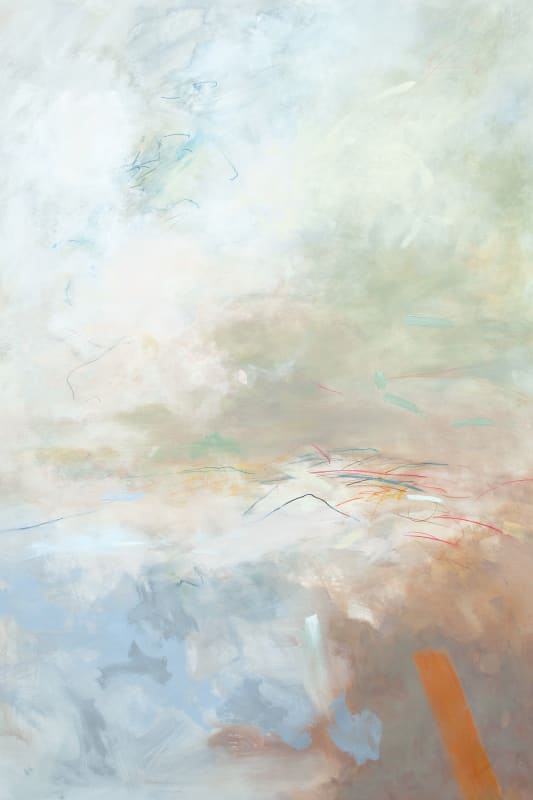Aldous resides in West London and has his studio in Kew. He was born in Leicester but moved to Banstead in Surrey when he was four. His Quaker father was a social worker and his mother worked as a hospital technician operating the cardiography equipment at the Royal Marsden Cancer Hospital in Sutton. Attending the local school in the 1970s Aldous did not study Art at school.
'"In those days the girls did cookery and the boys did woodwork; boys studied technical drawing and the girls, art - unfortunately that is how it was.
I did however paint and draw at home - usually drawings of birds or copies of drawings by Rembrandt.”
The interest in technical drawing led to him being employed as an Architect Technician at the Property Services Agency and then to study for a degree in Architecture at South Bank University. It was during these studies that his interest in art was ignited. Aldous then went on to Ravensbourne College to study Fine Art painting. In the early 1980s Ravensbourne was a college that valued experimentation and had a particular emphasis on encouraging abstract art. His most influential teachers at the time were Roger Ackling, the conceptual landscape artist and the performance artist, Gustav Metzger. Metzger was not the traditional teacher; invited by Roger Ackling he just turned up and talked to students. Metzger orchestrated discussions and meetings and invited several students, including Bob Aldous, to participate in Art Actions and performances under the label “Artists Support Peace”.
The interest in Peace performances and actions led Aldous to initiate an interactive installation called “Silver Petition” in St Paul’s Cathedral as a response to the 2005 London bombings. He also did a series of installation works for the underground performance venue called “Shunt” that was situated under London Bridge Station in 2010.
It was around 2010 that Aldous first started to experiment with silk as a surface on which to paint - initially with silver and white paint on black dyed silk. The experimentations continued and as his painting technique developed, ivory Habotai silk replaced the black silk. He also experimented with dyeing and sizing techniques to control the natural spread of the ink pigment. He found that silk provided a receptive surface for the absorption of ink glazes as well as calligraphic mark making and impasto paint application.
The experimental painting techniques on silk gives the paintings of Aldous a unique quality. The translucent property of watercolour and ink lend itself to a symbolic depiction of water. Here, Aldous returns to an early fascination with the flow of water and its relationship with perception and emotion.
“ During my degree at Ravensbourne College I decided to study water and hitchhiked to Switzerland to look at mountain streams. During these drawing studies I realized a shifting spacial relationship between the water’s surface, the reflection of the sky and the rock over which the water flowed. When focusing on the water’s surface I could perceive the sun, clouds and the blueness of the sky. By shifting focus I could then see the weeds, stones and the occasional fish darting beneath the ripples. All this contained within the same view, but depending on where I focused at that particular time.”
